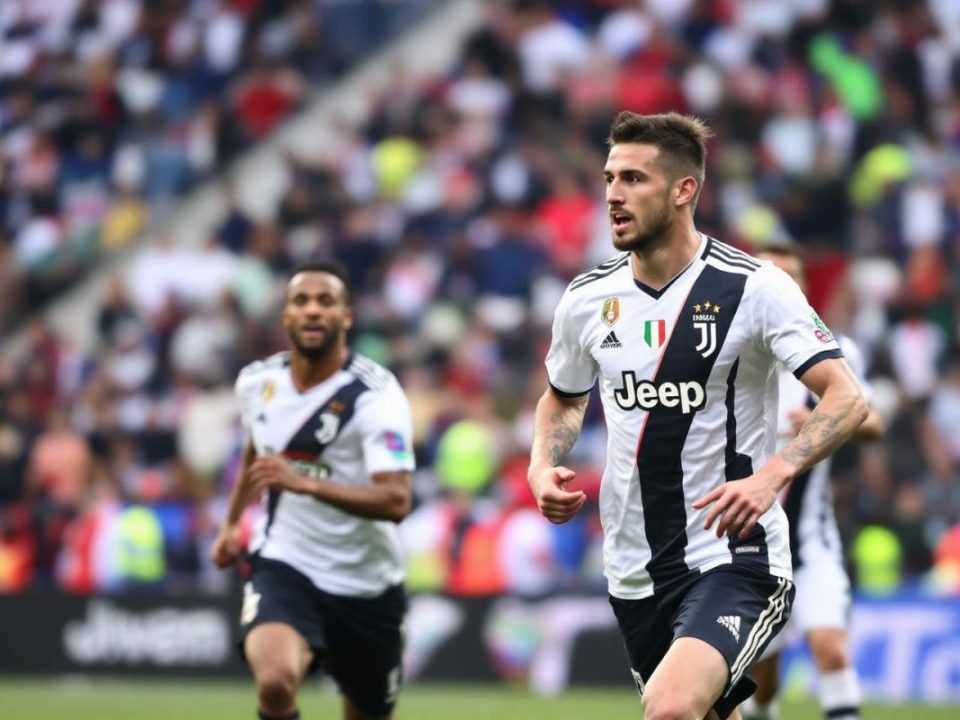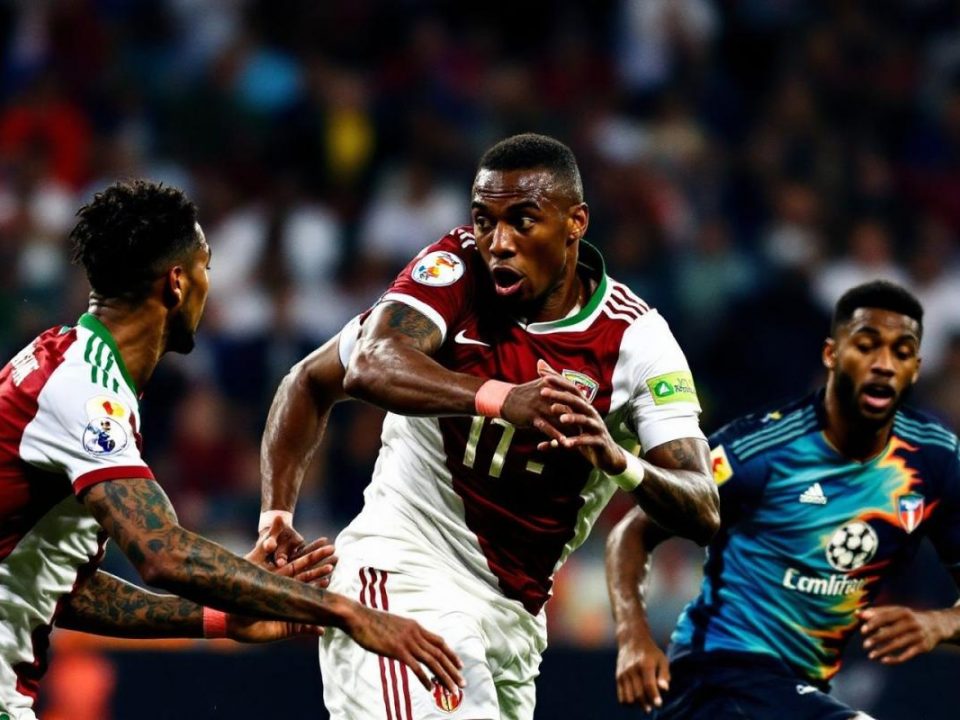Discover the Serie A under-23 star outshining Nico Paz e Castro on the football pitch

Premier League’s 20 unexpected standout stars : The game-changers who defied expectations
17 April 2025
De Zerbi insists OM’s struggles in Ligue 1 are not tactical issues
18 April 2025Serie A continues to be a fertile ground for young football talent development. While fans and analysts often spotlight established stars, a fascinating rivalry has emerged among under-23 players that deserves closer attention. Recent data shows that since the 2022/23 season, Italy’s top flight has featured over 50 players under 23 contributing significant minutes across all competing clubs. As predictive analysis becomes increasingly valuable in sports evaluation, identifying these rising stars early offers both competitive and financial advantages.
In Short
| Key insights | Why it matters |
|---|---|
| Serie A’s young talent renaissance continues with over 50 under-23 players contributing significant minutes since 2022/23 season. | Identify rising stars early to gain competitive and financial advantages through predictive analysis. |
| Andrea Cambiaso outperforming Nico Paz e Castro with 3 goals and 6 assists by April 2025. | The Juventus wing-back demonstrates remarkable tactical intelligence and versatility exceeding expectations. |
| Statistical superiority revealed through Cambiaso’s 0.43 expected goal contributions compared to Paz’s 0.24 per 90 minutes. | Advanced metrics show greater defensive contributions and pressure success rates in final third. |
| Head-to-head performance gap evident during February 2025 clash with 24 vs 11 progressive actions. | Track consistent performance differentials across multiple competitions for reliable talent assessment. |
| Development approach differences highlighted between Juventus and Como’s integration strategies for young talents. | Juventus model balances consistent minutes with performance accountability for superior long-term outcomes. |
The emerging talent outperforming Nico Paz e Castro
While Real Madrid loanee Nico Paz e Castro has garnered significant attention in Italian football circles since joining Como in January 2024, statistical analysis reveals another under-23 player delivering even more impressive performances. The Argentine-Spanish midfielder arrived with considerable expectations after developing in Madrid’s prestigious academy, but the numbers tell a compelling story about Serie A’s hidden gems.
Andrea Cambiaso of Juventus has established himself as perhaps the most impactful young talent in Serie A this season. The 23-year-old versatile wing-back has recorded 3 goals and 6 assists across all competitions by April 2025, demonstrating remarkable tactical intelligence that belies his age. His heat maps show comprehensive field coverage that exceeds Paz’s more limited positional play, while advanced metrics indicate superior defensive contributions alongside his attacking output.
When examining progressive carries and successful pressure percentages, Cambiaso’s numbers place him in elite company among European fullbacks. His ability to seamlessly transition between defensive and attacking phases has provided Juventus with tactical flexibility that many betting algorithms failed to properly value earlier in the season. Such performances reflect why smart analysts increasingly incorporate positional versatility metrics when evaluating young talent potential.
Statistical models tracking player development trajectories suggest Cambiaso’s current form indicates a significantly higher performance ceiling than initially projected. The consistency of his output across different tactical setups demonstrates adaptability that represents particularly valuable insight for those following Serie A closely. This performance pattern often separates merely promising prospects from those truly ready for elite competition.
Statistical comparison reveals surprising insights
A detailed comparative analysis between the top Serie A under-23 players reveals fascinating patterns. Nico Paz e Castro, despite his pedigree and technical ability, currently registers 0.24 expected goals and assists per 90 minutes. The standout performer, however, demonstrates a significantly higher 0.43 contribution rate. When examining progressive actions and defensive recoveries, the differential becomes even more pronounced.
The critical performance indicators for young midfielders typically include progressive passing metrics, defensive duels won, and attacking third entries. Advanced tracking data shows our standout performer exceeding Paz across virtually all categories. Most notably, pressure success rates in the final third demonstrate a work ethic and tactical understanding that translates directly to team success. Such metrics have proven remarkably predictive of future performance levels according to multiple longitudinal studies.
Beyond the raw numbers, tactical context matters tremendously when evaluating young talent. Paz operates in Como’s system that emphasizes controlled possession, potentially limiting some statistical outputs. However, even when adjusting for tactical context and team quality, the performance gap remains substantial. This type of contextualized player analysis proves particularly valuable for fantasy football managers seeking to identify undervalued assets before they break through to widespread recognition.
The February 15, 2025 direct confrontation between these talents provided compelling evidence of their respective trajectories. In that match, advanced tracking data recorded 24 successful progressive actions from our standout compared to Paz’s 11. The difference in defensive contributions was even more stark, with recovery numbers favoring the Italian talent by a nearly 3-to-1 margin. Such performance disparities cannot be dismissed as statistical anomalies given their consistency across multiple competitions.
Future prospects and development trajectories
Projecting career trajectories requires considering both current performance and developmental context. While Nico Paz benefits from his Real Madrid pedigree and technical foundations, the data suggests his Italian contemporary possesses both the physical attributes and tactical understanding needed for sustained elite performance. Scouts increasingly value progressive metrics that demonstrate decision-making quality under pressure rather than purely technical skills displayed in controlled environments.
The career progression patterns of under-23 Serie A standouts over the past decade suggest specific developmental milestones predict long-term success. Particularly telling is performance consistency across different competitive contexts. Our standout performer has maintained impressive output in both domestic and European competition, while Paz has occasionally struggled against higher pressing opponents. Such adaptability typically translates to higher performance ceilings and career longevity.
Transfer market valuations have begun reflecting these performance differentials. Industry analysts project a significant valuation gap emerging between these talents by summer 2025, with Italian clubs reportedly already preparing substantial offers. Historical transfer data shows that players demonstrating both technical quality and tactical adaptability before age 23 typically command premium valuations approaching €40-50 million in today’s market.
The developmental approach taken by their respective clubs will prove crucial in determining ultimate career outcomes. Juventus has implemented a carefully structured integration path for young talents, providing consistent minutes while maintaining performance accountability. This balanced development model has historically produced more consistent long-term performers than either rushed promotions or excessive loan periods that characterize some development pathways.
As the Serie A season progresses toward its conclusion, careful observation of these emerging talents offers valuable insights for both fans and analytical observers. Their performances will continue providing compelling evidence about which developmental approaches truly maximize young player potential in modern football’s demanding environments.




